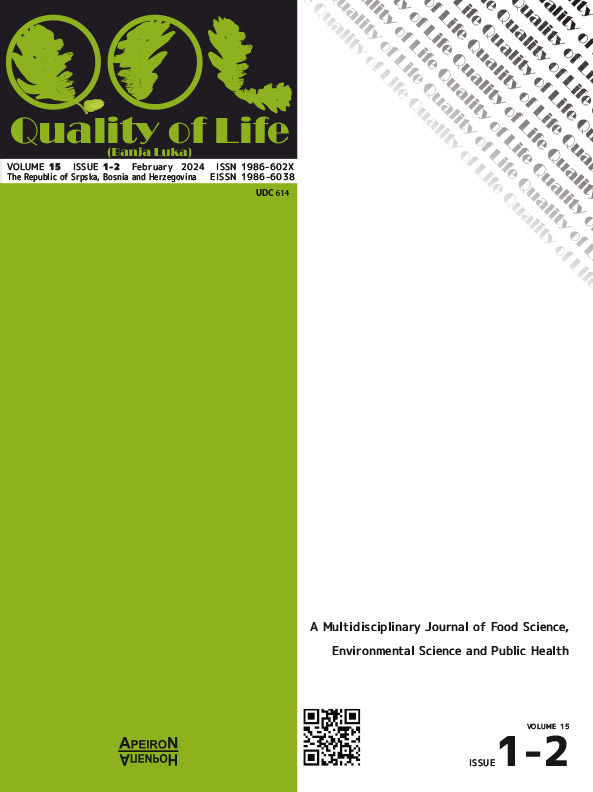Influence of Modified Diet and Low Grade Physical Activity on Serum Lipids in Patients With Type IIa and IIb dyslipoproteinaemia
DOI:
https://doi.org/10.7251/QOL2401046KAbstract
Dyslipoproteinaemia, a common name for different types of serum lipid disorders, plays one of the crucial roles in the etiology of atherosclerosis. Complications of atherosclerosis, primarily coronary heart disease (CHD), in early life lead to significant disability and are the worldwide leading cause of death. Treatment of dyslipoproteinaemia, as a separate disease, is carried out as a part of the treatment of CHD, and includes non-pharmacological and pharmacological measures. Recognizing an underestimated value and role of dietary modifications in everyday life of patients with hypercholesterolaemia, we decided to actualize our investigation from 2000, as we witness that lipid lowering drugs are prescribed almost as soon as elevated serum lipid levels are detected. The aim of our study was to evaluate the effects of a hypolipemic diet and low grade physical activity on serum lipid/lipoprotein levels in twenty patients with primary dyslipoproteinemia Type IIa and IIb, according to Fredrickson classification. All patients with Type IIa and IIb dyslipoproteinaemias were subjected to a hypolipemic diet that is a modification of Step I, Step II (NCEP) and the Mediterranean diet for a period of four weeks. The minimum physical activity involved a daily light walk lasting at least 1 hour. Complete lipid status has been done before and after the period of four weeks. The positive effects of our modified diet were shown as a decrease of all proatherogenic lipid/lipoprotein serum concentrations, except for β-lipoprotein. Serum concentrations of antiatherogenic α-lipoprotein increased.
